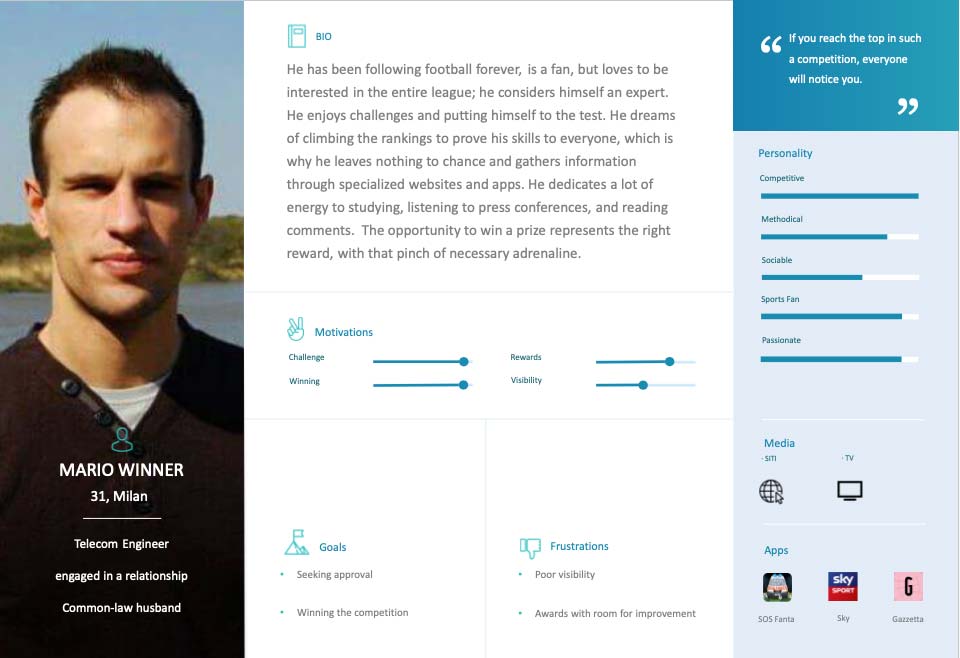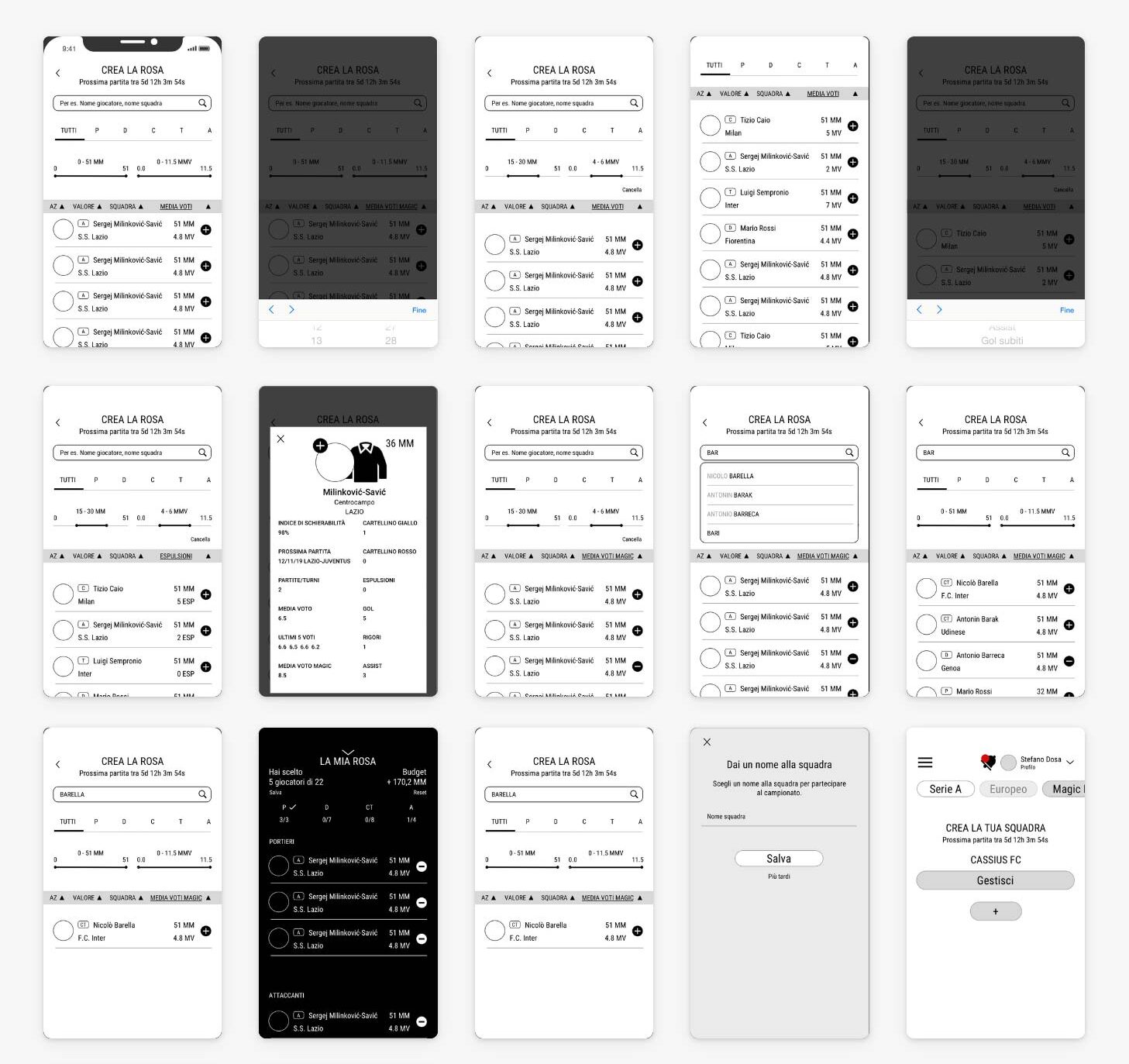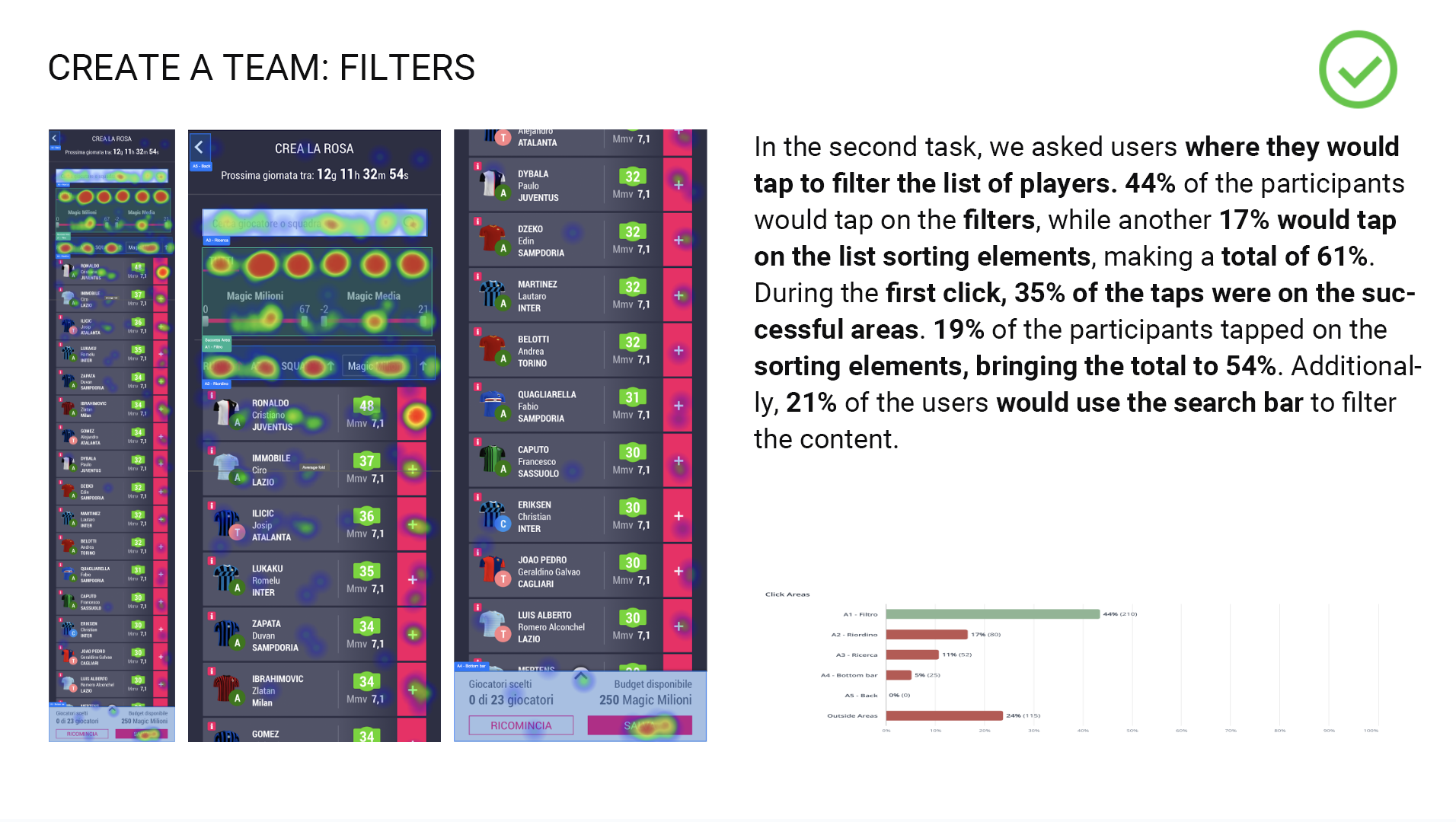Gazzetta Magic App
Overview
Magic is the management platform of the Gazzetta dello Sport fantasy football games. This app was designed to expand the gaming experience and meet the user needs in order to play it in a fully user friendly mobile mode.
Problem
La Gazzetta dello Sport represents the brand most strongly associated with Fantasy Football in Italy, but it is a more “abstract,” “value-based” connection rather than a concrete one. There are smaller entities that have now become constant reference points in the Fantasy Football realm.
Solution
By leveraging its heritage and taking advantage of the fact that many of the smaller entities are considered extensions of La Gazzetta dello Sport, the decision was made to expand the gaming experience by bringing it to mobile devices through a specially designed native app. This allows users to enjoy the game in a convenient and tailored manner, capitalizing on the widespread popularity and accessibility of mobile platforms.


Role
I assumed the following roles designing this native app:
- User Experience (UX) Designer
- Interaction (IxD) Designer
- UX Researcher
Deliverables
- Stakeholder Interviews
- Competitive benchmarking
- Heuristic Analysis
- Focus Group
- User surveys and one-on-one interviews
- Information Architecture (IA) Design
- User journeys and flowcharts
- Low-fidelity wireframes
- High-fidelity mockups and prototypes
- Usability tests and findings
- Iterative Improvements
- High-fidelity interactive prototypes for key tasks
- Presentation to stakeholders
Project Specifications
Duration 10 weeks
Tools:
-
- Sketch
- Hotjar
- Userzoom
- Invision
- Zeplin
- RP Axure
- Adobe Analytics
Process
Discovery
In this project, as part of a collaborative effort with the research team, we embarked on an extensive research plan to investigate the experiences and motivations of fantasy football users/players. Our focus revolved around game preparation, contests, and both online and offline gameplay.
To ensure a comprehensive understanding, the research team designed and implemented a quantitative survey that engaged 3000 football enthusiasts between the ages of 18 and 65. This survey provided valuable statistical data, allowing us to uncover user behaviors and preferences.
In addition to the survey, the research team organized focused group sessions. Each session included 8 to 10 users carefully selected based on age and gaming preferences. These sessions provided a platform for interactive discussions, allowing us to gather qualitative feedback and firsthand experiences from the participants.
By combining the insights gained from the quantitative survey and the focused group sessions, we were able to delve deep into the world of fantasy football, uncovering the motivations that drive users and understanding their unique gaming journeys. These valuable insights played a pivotal role in informing our design decisions, ensuring that the final product was tailored to meet the needs and expectations of our target audience.
Quantitative Results:
- All football enthusiasts are familiar with fantasy football, and 2/3 of them have played or currently play the game.
- There is a limited overlap between different types of fantasy football games (contest-based fantasy football and league-based fantasy football), with 37% of participants not using an online platform.
- In contest–based fantasy football, the two main players are Gazzetta (41%) and SKY (42%), while league-based fantasy football is more fragmented, with Fantagazzetta being the leader with 62% participation.
- Two-thirds of Magic Leghe players also play Fantagazzetta.
- The Fantagazzetta app serves not only as a gaming platform but also as one of the primary sources of information for players of league-based fantasy football, and it is highly regarded by all fantasy football players.
- SKY is perceived as an authoritative and in-depth source of information.
Qualitative Results:
- A clear distinction between the experiences of a fantasy football player and that of a football fan.
- The importance of relational experiences within leagues.
- The relational component serves as the primary driver of engagement.
- Potential for communication through fantasy football experiences.
- Relational experiences are tied to generational experiences, providing a way to narrate different stages of life.
- The sense of challenge associated with contests.
- Intense emotional experiences within fantasy football.
- The Gazzetta dello Sport is perceived as the ultimate reference for fantasy football in theoretical terms, rather than practical ones.
- Online platforms are perceived as fragmented and confusing in terms of offerings, services, and brands.
- Basic utilization of gaming platforms.
- Fantasy football is seen as a projection game.
- Unlike video games, fantasy football is perceived as real and authentic.
"In that case, everything is fake, but here, no, here the players, the matches, the game days, it's all real."
"We are all coaches, we play to give it a try."

Empathize
We have decided to integrate this study with a UX research plan that included website analysis, competitive benchmarking, user behavior analysis using Hotjar, and targeted individual interviews to foster empathy and complete the user profile. This allowed us to compile a report to present to stakeholders and create 2 user personas:
- Mario Winner, the expert player who loves challenges and putting himself to the test
- Danilo Outgoing who loves the game because it keeps the relational aspect alive.

Design
The concept of personas enabled the ideation team, consisting of UX and UI designers, Product Managers, and Developers, to conduct weekly co-design sessions. These sessions aimed to establish requirements and devise solutions that cater to the users’ needs. Recognizing the importance of the game’s relational aspect, we decided to incorporate a feature that allows players to create rankings among friends, ensuring a seamless experience for Danilo Outgoing.
Through the focus groups, it became clear that the Brand is perceived as a guarantee of high-quality information. Therefore, we made a commitment to integrate informative spaces about football news within the game. Additionally, we dedicated an area specifically for journalistic insights. To adapt the management dynamics of team creation, player transactions, and on-field deployment to the mobile platform, we completely redesigned them. Furthermore, we integrated a system of notifications to provide users with constant updates on the game’s progress.
Our approach included week-long sprints, during which we focused on various activities such as refining requirements, creating wireframes, designing the user interface, and obtaining approvals.


Testing and Iteration
To validate the design choices, I conducted usability testing sessions involving representative users. During these sessions, we utilized both interactive and non-interactive prototypes to execute click tests and think-out-loud tests. This allowed us to verify the correct understanding of interface elements, evaluate the project’s usability, and gather user experience feedback. We leveraged this valuable feedback to iterate and refine the design process, ensuring that the final product meets the needs and preferences of the users.

Implementation and evaluation
I worked closely with the developers to ensure that the project was implemented accurately, paying attention to details such as layout, interactions, and responsiveness. Effective communication and understanding between the design and development teams were essential for the successful handover.
The post-launch evaluation involved analyzing user feedback, conducting usability tests, and studying metrics to understand how users interacted with the final product. This data-driven approach allowed us to identify pain points, areas of success, and make iterative improvements to enhance the overall user experience.
